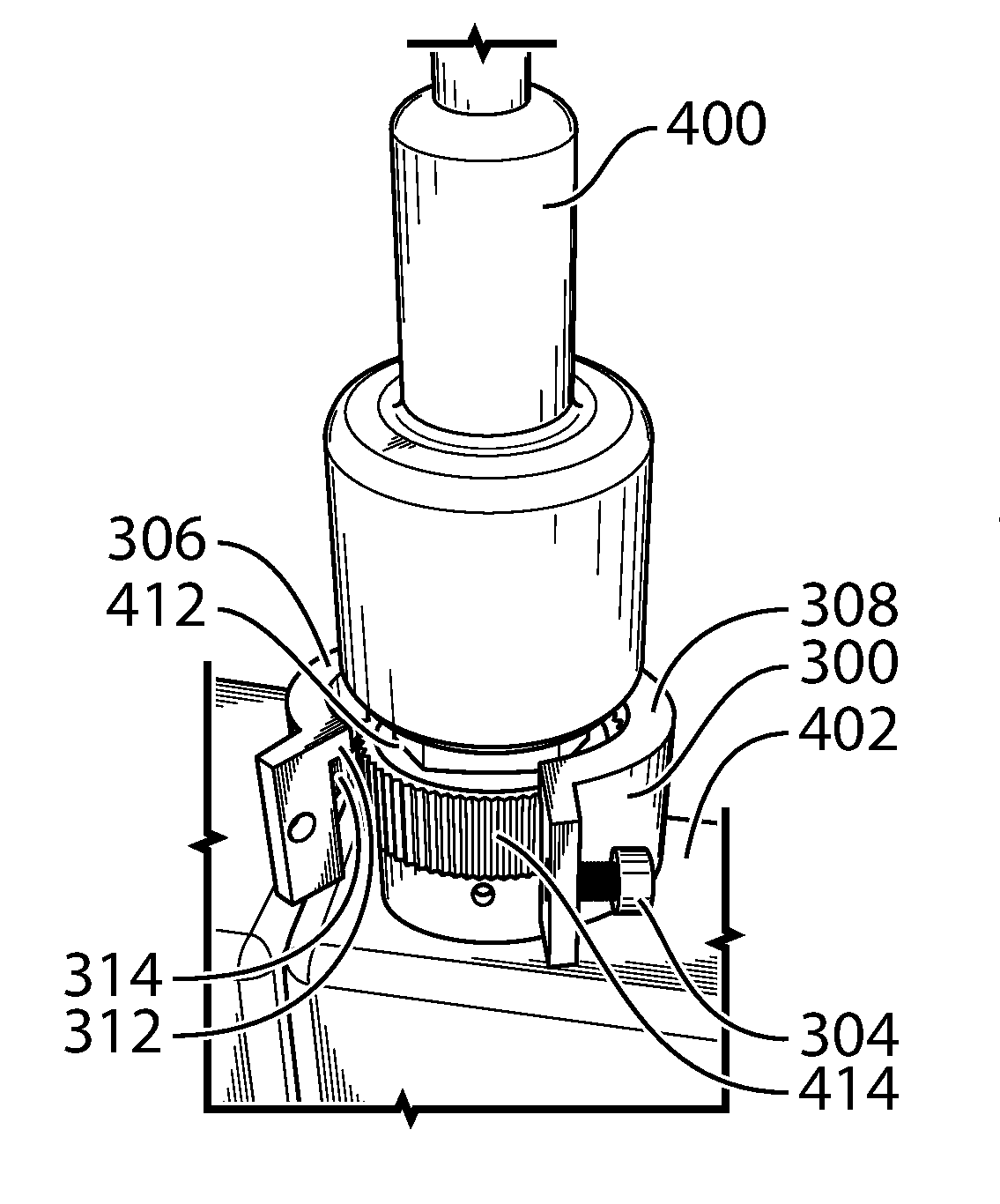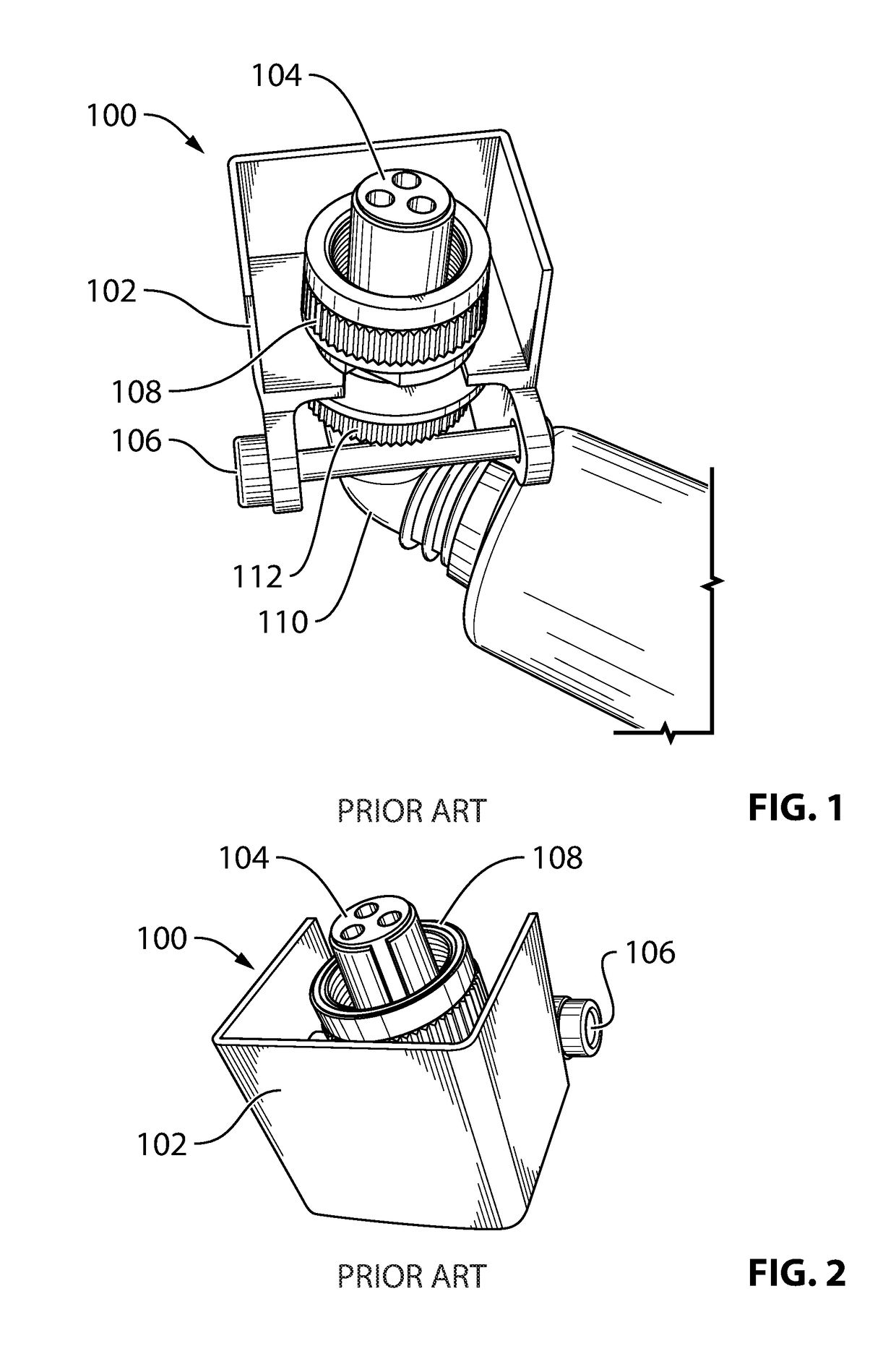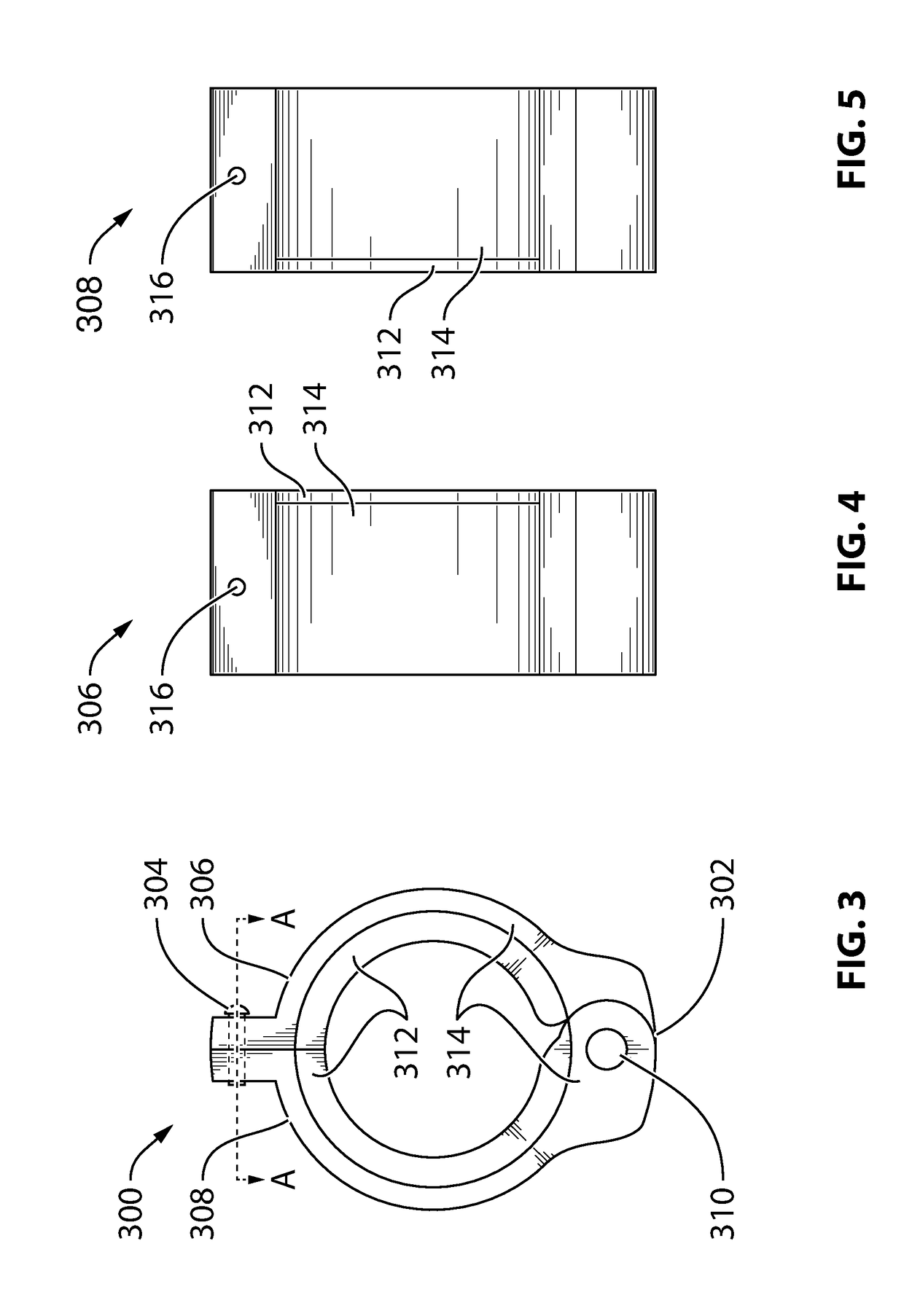Lockout device for securing cable connector
- Summary
- Abstract
- Description
- Claims
- Application Information
AI Technical Summary
Benefits of technology
Problems solved by technology
Method used
Image
Examples
Embodiment Construction
[0038]FIG. 3 illustrates a top view assembly diagram of a circular connector lockout device 300 with hinge assembly 302 and set screw 304 according to an exemplary embodiment of the present invention. The lockout device 300 includes a first ring portion 306 and a second ring portion 308 both generally formed by “C” shaped parts made of aluminum. The first ring portion 306 and the second ring portion 308 are secured to one another by the user of the hinge assembly 302 with integrated hinge pin 310 shown at the bottom area of FIG. 3 and the user adjustable set screw 304 shown at the top area of FIG. 3. Together, the first ring portion 306 and the second ring portion 308 form a tubular ring that can be utilized to surround the perimeter of a circular connector.
[0039]An inner facing protrusion is formed in this example by a circular ridge that acts as a locator ring 312 for holding the lockout device 300 captive on the connector while the first ring portion 306 is secured to the second ...
PUM
 Login to View More
Login to View More Abstract
Description
Claims
Application Information
 Login to View More
Login to View More - R&D
- Intellectual Property
- Life Sciences
- Materials
- Tech Scout
- Unparalleled Data Quality
- Higher Quality Content
- 60% Fewer Hallucinations
Browse by: Latest US Patents, China's latest patents, Technical Efficacy Thesaurus, Application Domain, Technology Topic, Popular Technical Reports.
© 2025 PatSnap. All rights reserved.Legal|Privacy policy|Modern Slavery Act Transparency Statement|Sitemap|About US| Contact US: help@patsnap.com



